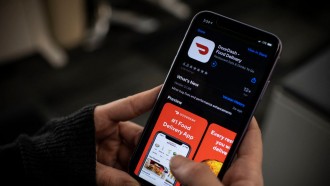Every day millions of packages are delivered throughout the United States. That's millions of shipping boxes changing hands in long, complicated supply chains.
For an item to arrive at your doorstep safely in one piece, the process starts when your retailer chooses the correct box and the best packing material for your item.
Unfortunately, not enough thought goes into the choice of box and packing materials, leading to wasted resources-or the disappointment of a broken item.
When a shipping box is too large for the item it holds, extra foam, peanuts, bubble wrap or other fillers need to be added to fill out the unused space to secure the item during shipping, resulting in wasted expense and resources. Inefficient packaging cuts into profits and adds to the strain on our environment with consumers having to dispose of extra packing materials.
Pre-made boxes have been the industry norm. Yes, they're convenient, but they take up more space in a warehouse and during transport, and consume more paper and plastic materials than necessary. Manufacturers and retailers can maximize time and money, and help maintain our environment, by eliminating the use of pre-made boxes. In an era where cutting-edge tools have streamlined production in many industries, the process for product packaging and shipping has not evolved, until now.
Packsize On Demand Packaging: How It Works
One company has been working toward making fast, cost-efficient and eco-friendly packaging solutions for manufacturers and retailers: The award-winning Packsize.
"If we're smart enough to send a rocket to the moon," the Packsize team thinks, "then why can't we figure out how to make the right-sized box on demand?" So they figured it out.
With Packsize On Demand Packaging, companies can set up their own box-making machine in-house and customize the necessary sizes of packaging according to the specifications of their own products. No more wasteful pre-made boxes.
Because the packaging is custom-made, the amount of corrugated cardboard used in making a delivery box is reduced, which leads to better savings on packaging and lower freight costs.
Also with on-demand made box there is less space that needs to be filled with excess plastic cushioning, which may not secure an item properly, and can be harmful to the environment. Instead, the product sits safe and snug inside its custom packaging to minimize damage during shipment.
On Demand Packaging Streamlines Production, Distribution and Delivery: Case Studies
When Packsize teamed up with outdoor recreation goods retailer Cabela's, the partnership proved how On-Demand Packaging production not only reduced costs but also bolstered the efficiency of the company's shipment packaging process.
"The acceleration of the entire distribution process has been one of the major drivers where Packsize On Demand Packaging has helped Cabela's," says Hanko Kiessner, Packsize CEO.
Overall productivity at Cabela's improved by 30 percent while training time was cut down also by 30 percent. During intense peak order seasons, improvement to processes and training can be a lifesaver for any retailer.
In 2013, the partnership between office supplies chain store Staples and Packsize earned both companies the Gold Sustainability award from the World Packaging Organization. On Demand Packaging technology and systems have been instrumental for Staples to reduce corrugated cardboard use by 15 percent and filler use by 60 percent.
By cutting back on the amount of packaging materials used, Packsize helps companies reduce package fillers, use less corrugated box material, pay lower freight costs and save warehouse space typically reserved for storing pre-made boxes. Plus their eco-friendly materials helps keep plastics out of landfills and oceans. In an industry that seems to have gotten left behind in the technology revolution, Packsize On Demand Packaging has stepped in as the future of shipping technology.
* This is a contributed article and this content does not necessarily represent the views of techtimes.com





